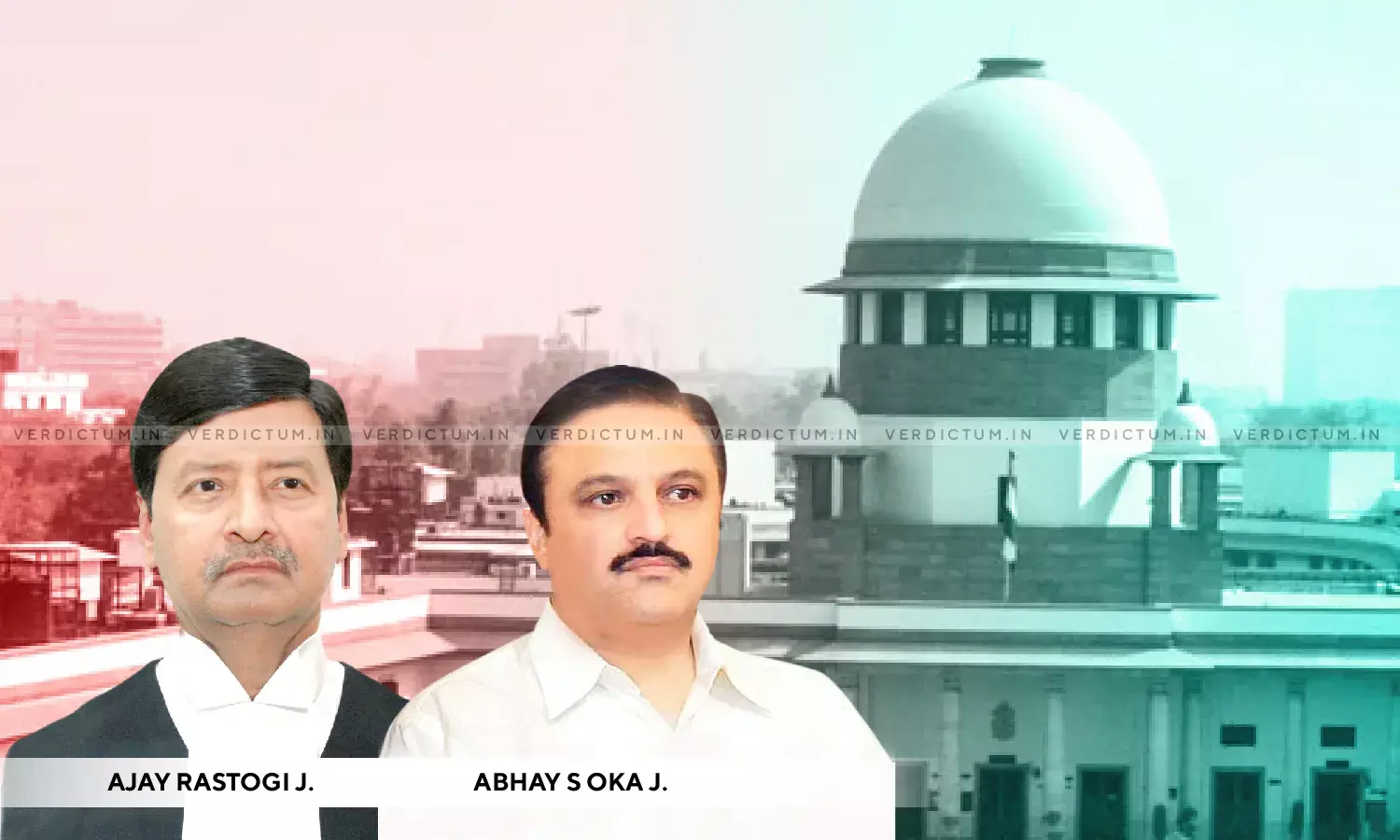Burden Is On Insurer To Prove That Case Falls Within Purview Of Exclusionary Clause - Supreme Court

A Supreme Court Bench of Justice Ajay Rastogi and Justice Abhay S. Oka heard an appeal challenging the order and judgment passed by the National Consumer Disputes Redressal Commission, regarding an insurance claim and the applicability of the Exclusion Clause.
The Bench opined that the Respondent was unable to discharge the burden of bringing the case under the purview of the Exclusion Clause.
Senior Counsel Mr. Santosh Paul appeared on behalf of the Respondent and Mr. Santosh Kumar appeared on behalf of the Appellant.
The Appellant had taken a Standard Fire and Special Perils Policy from the Respondent-Insurance Company. The Appellant lodged a claim on the basis of the policy, alleging that some anti-social people had entered their factory premises with arms and ammunition, and they caused substantial damage to the factory, machinery, and other equipment. An FIR was also registered based on the incident. The surveyor appointed by the Respondent assessed the loss, but the Appellant claimed that the Respondent was liable to make a payment of much more. The Respondent rejected this claim by placing reliance on the Terrorism Damage Exclusion Warranty in the policy regarding loss or damage caused by acts of terrorism.
The Appellant filed a complaint before the Commission, complaining about a deficiency in the service offered by the Respondent. They prayed for a grant of monetary relief on account of loss suffered, and a separate amount was claimed on account of agony and harassment. The Appellant also claimed interest and cost amount. The Commission held that the damage caused to the factory and equipment was due to an act of terrorism, and because of the Exclusion Clause, the Respondent was justified in rejecting the claim of the Appellant.
The Counsel appearing for the Appellant contended that on a conjoint reading of the First Information Report, Closure Report, and Investigation Report, it was apparent that it was not a case of a terrorist act within the meaning of the Exclusion Clause. He further argued that the burden was on the Respondent to provide that the Exclusion Clause was attracted, and in case of any ambiguity, the insurance contract will have to be construed in favor of the Appellant.
The Counsel appearing on behalf of the Respondent argued that the fact that 120 people entered the factory premises along with weapons, and carried out large-scale destruction, shows that it was an act of terrorism. He also contended that the very fact that provisions of the Criminal Law (Amendment) Act, 1908 were applied, shows that the loss caused to the Appellant was due to a terrorist act. Further, he argued that the burden was on the Appellant to show there was liability under the policy, and the Appellant had failed to discharge the burden.
The Supreme Court found that the FIR or Closure Report does not refer to acts of terrorism as defined in the Exclusion Clause, and since the miscreants were untraced, it could not be conclusively proved that they belonged to terrorist groups.
The Court relied on the case of Ishar Das Madan Lal, where it was held that when an exclusionary clause is contained in a policy, the burden was on the insurer to show that the case falls within the purview of the clause. It was also held that in case of ambiguity, the contract of insurance will be construed in favor of the insured.
Applying the principle in this case, the Bench found that the Respondent had not discharged the burden of bringing the case within the four corners of the Exclusion Clause.
Further, the Bench held that the parties could not rely upon the definitions of terrorism in various penal statutes, since the Exclusion Clause contained exhaustive definitions.
Therefore, the Supreme Court opined that the Commission committed an error by applying the Exclusion Clause.
Further, the Court found that the insurance policy explicitly covered liabilities arising out of damage to property due to riots or the use of violent means.
To that end, the Court held that the decision to reject the policy could not be sustained and ordered that "An adjudication will have to be made on the quantum of the amount payable to the appellant after appreciating the evidence on record, including the valuation reports. However, the valuer appointed by the respondentcompany has valued the loss caused to the appellant at approximately Rs.89,00,000/. We, therefore, propose to direct the respondent to deposit the said amount with the Commission with liberty to the appellant to make an application for withdrawal."
The Court also requested the Commission to pass an appropriate final order within four months. No order was passed as to costs.
Click here to read/download the Judgment

